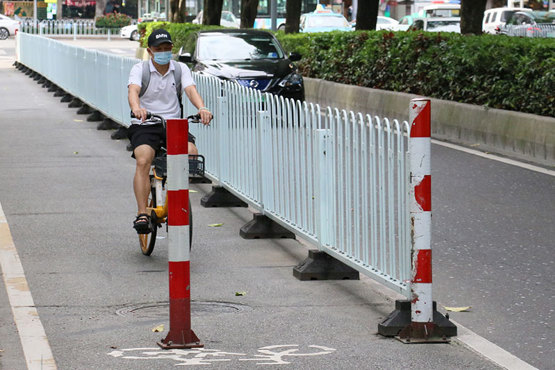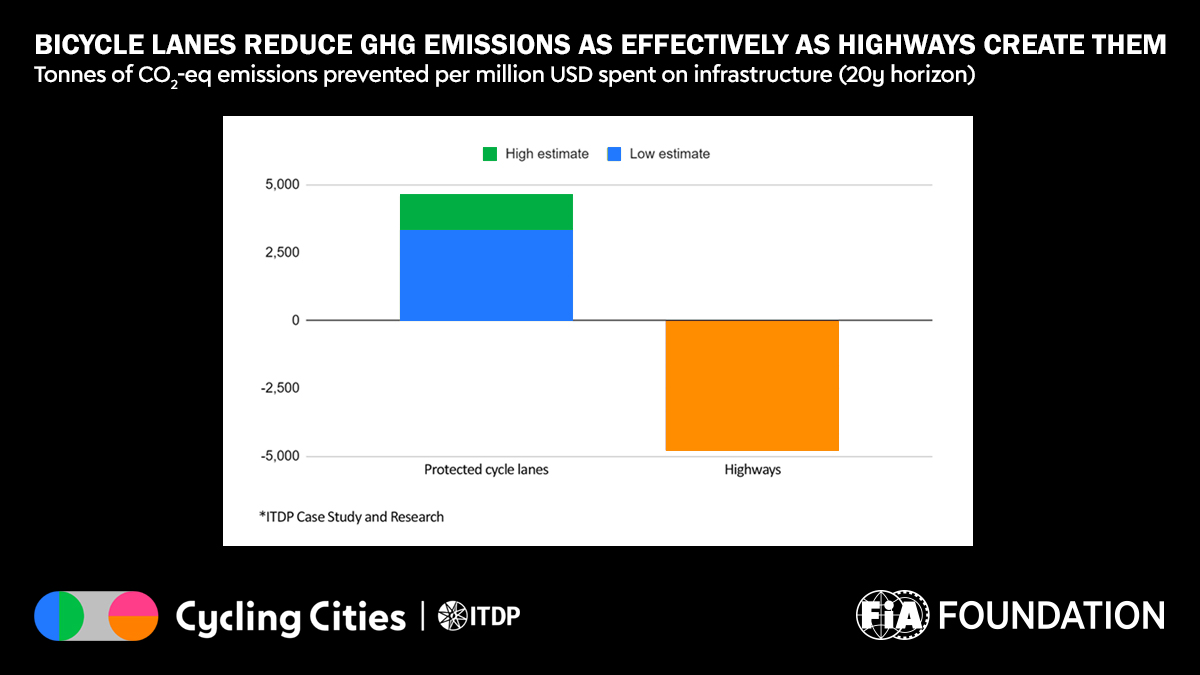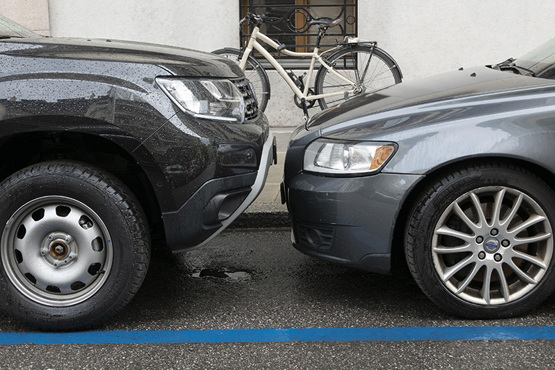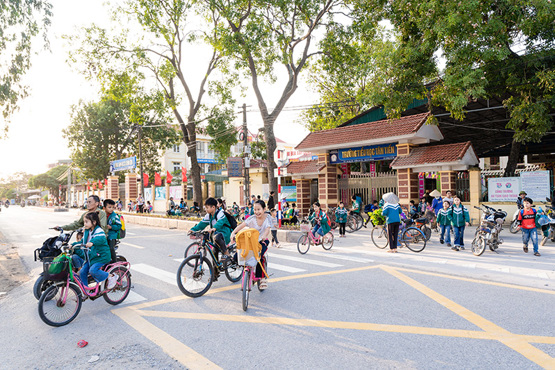Protected bike lane networks save money and protect planet, new study shows

Investment in urban protected bicycle lanes can significantly reduce greenhouse gas (GHG) emissions, lower transport costs, and prevent road fatalities compared to investment in other infrastructure, says a new report developed by the Institute for Transportation and Development Policy’s (ITDP) global Cycling Cities campaign, supported by the FIA Foundation.
The report, Protected Bicycle Lanes Protect the Climate, finds that networks of protected bicycle lanes in middle-income cities are an extremely cost-effective way of reducing emissions; providing quantifiable economic benefits, and paying for themselves in less than a year. These networks create more economic value annually than they cost to build, given the transportation cost savings and the public health benefits of increased exercise. Protected bicycle lane networks outperform all other infrastructure developments, for example, metro rail systems, while an essential part of sustainable urban transportation, are outperformed by a factor of ten in terms of emissions reductions per dollar spent. For every 200 USD spent on highways, the report estimates, one tonne of GHG emissions per year will be created, while the same spend on protected bicycle lanes mitigates almost exactly the same level of GHG emissions.

The report is one of the first-ever empirical measures of GHG reductions from networks of protected bicycle lanes in low- and middle-income countries, specifically examining the impacts of the extensive networks that exist in the major cities of Bogotá, Colombia and Guangzhou, China. Using cyclist counts and intercept surveys, combined with lifecycle emission factors for various modes, this study estimates that these networks prevent the emission of about 22,000 tonnes of CO2-eq per year in Bogotá and 16,000 in Guangzhou. In each city, this is equivalent to the amount of carbon that would be sequestered by planting 300,000 to 400,000 new trees every year.
Investing in cycle lanes provides a myriad of economic and social benefits to cities as well. According to the report, Bogotá’s network cost an estimated 132 million USD to build, saves travellers 80 million USD per year, and prevents 300 deaths per year — providing an economic value of 230 million USD, for a benefit of 310 million USD per year in total. Guangzhou’s network cost an estimated 69 million USD to build, saves travellers 30 million USD per year, and prevents 50 deaths — providing an economic value of 55 million USD per year, for a benefit of 105 million USD per year in total. These estimates of economic benefits do not include time savings, reduced air pollution, land value uplift, or other aspects of the economic benefits of cycling.
The findings of this research enable anyone to model the climate impacts that a bicycle lane network would have in their city. ITDP Researchers have developed a free interactive modelling tool to predict the impact of any proposed bicycle lanes development, which is available to download here in Microsoft Excel or Google Sheets. This model provides a way for governments, development banks, and funders to understand the associated costs and the climate benefits of investing in networks of protected bicycle lanes.
This report is a timely response to the climate crisis and addresses how cities around the world need to take a systems-based approach to mitigate growing greenhouse gas emissions through urban transport investment. Prioritizing investments and policies that expand cycling infrastructure is one of the keys to shifting a significant share of trips from emissions-heavy private vehicles towards cycling as an essential, low-carbon mode of transport.
Around the world, cities urgently need to reduce emissions to address climate change and improve quality-of-life for their people by supporting more low-carbon modes of transport. Unfortunately, bicycle lanes have often not been treated as major pieces of infrastructure in the same way as metros, bus rapid transit systems, and highways. The lessons drawn from Bogotá and Guangzhou in this report demonstrate that networks of protected bicycle lanes should be considered essential — they can be built much more quickly and cost-effectively than rapid transit systems and implementation takes a few years or less, rather than decades. The most crucial action a city can take to promote cycling in particular is the construction of a network of protected bicycle lanes to establish cycling as safe, affordable, and accessible.
Sheila Watson, Deputy Director of the FIA Foundation, said: “Urban cycling is an often overlooked element of urban transport planning, but this report shows it can unlock climate, environmental, and health benefits. It is extraordinary to see that dollar-for-dollar, protected cycle lanes are not just carbon neutral but fully mitigate the greenhouse gas emissions created when the same amount of spending goes on highways. The case for investment in cycling is not just good financial sense, it is essential for healthier, safer and more equitable cities.”
“Cities need to be designed for the well-being, safety, and health of people. Having robust networks of protected cycle lanes is key to ensuring more sustainable and inclusive urban mobility,” said ITDP CEO Heather Thompson. “This report presents crucial evidence that extensive networks of protected lanes lead to more cycling, which in turn helps to reduce GHG emissions by reducing cars on the road. Now is the moment for governments and financiers to ensure that more protected cycle lane networks are built as a fast, affordable solution to climate change. The evidence is here – the time to act is now."
Read Protected Bicycle Lanes Protect the Climate report here.



